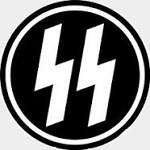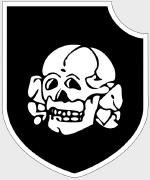Forces of Valor 80045 German Sturmgeschutz III Ausf. G Assault Gun with Side Skirts and Four Soldiers - 3.SS Panzer Grenadier Division "Totenkopf", Kursk, Russia, 1943 (1:32 Scale)
"If the tank succeeds, then victory follows."
- Major-General Heinz Guderian, "Achtung Panzer!"
 The German Sturmgeschutz was one of the most successful armored fighting vehicles of the Second World War. It arose from an original concept of the pre-war panzer divisions, whereby a special vehicle for infantry support work was planned. During the war years, the Sturmgeschutz was rapidly developed and upgunned, and was used both in its original role as an assault gun and also as a tank destroyer.
The German Sturmgeschutz was one of the most successful armored fighting vehicles of the Second World War. It arose from an original concept of the pre-war panzer divisions, whereby a special vehicle for infantry support work was planned. During the war years, the Sturmgeschutz was rapidly developed and upgunned, and was used both in its original role as an assault gun and also as a tank destroyer.
The final and by far the most common of the StuG series was the Ausf. G. The upper superstructure was widened: welded boxes on either sides were abandoned. This new superstructure design increased its height to 2160 mm. The back wall of the fighting compartment got straightened, and the ventilation fan on top of the superstructure was relocated to the back of the fighting compartment. From March 1943, the driver's periscope was abandoned. In February 1943, Alkett was joined by MIAG as a second manufacturer. From May 1943, side hull spaced armor plates (Schurzen) were fitted to G models for added armor protection, particularly against Russian anti-tank rifles, but were also useful against hollow-charge ammunition. Side plates were retro-fitted to some Ausf. F/8 models, as they were to be fitted to all front line StuGs and other tanks by June 1943 in preparation for the battle of Kursk. Mountings for the Schurzen proved inadequately strong, as many were lost in the field. From March 1944, an improved mounting was introduced; as a result, side skirts are seen more often with late model Ausf G. From May 1943, 80 mm thick plates were used for frontal armor instead of two plates of 50 mm + 30 mm. However, a backlog of StuGs with completed 50 mm armor existed. For those, a 30 mm additional armour plate still had to be welded or bolted on, until October 1943.
Pictured here is a 1:32 scale diecast replica of a Sturmgeschutz III (StuG III) Ausfuhrung G assault gun that was attached to the 3.SS Panzer Grenadier Division "Totenkopf", then deployed to Kursk, Russia, during July 1943.
Sold Out!
Dimensions:
Length: 8-1/2-inches
Width: 4-1/4-inches
Release Date: April 2012
 Historical Account: "Death's Head" - "Totenkopf" (Plural: Totenkopfe) is the German word for "death head" or "death's head" and is used to describe a military insignia featuring a skull above crossed bones. It is distinguished from the similar traditions of the skull and crossbones and the Jolly Roger by the positioning of the bones directly behind the skull. For a long time in widespread use in several countries, its association with aspects of Nazi Germany has led to its decline.
Historical Account: "Death's Head" - "Totenkopf" (Plural: Totenkopfe) is the German word for "death head" or "death's head" and is used to describe a military insignia featuring a skull above crossed bones. It is distinguished from the similar traditions of the skull and crossbones and the Jolly Roger by the positioning of the bones directly behind the skull. For a long time in widespread use in several countries, its association with aspects of Nazi Germany has led to its decline.
In the early days of the NSDAP, Julius Schreck, the leader of the Stabswache (Adolf Hitler's bodyguard unit), adopted the Totenkopf for his unit.
This later grew into the Schutzstaffel (SS), which continued to use the Totenkopf as insignia throughout their brief history. As they had done with the Swastika, the Nazis simply adopted the Totenkopf from the historical tradition and used it for their own purposes, leaving it marked with a stigma that has continued to the present.
It is important to note that the SS "Death's Head" symbol is markedly different from the original German (Prussian) "Totenkopf", the original being much more "cartoonlike" in appearance, with the SS version appearing more "realistic." In short, they are two very different symbols.


